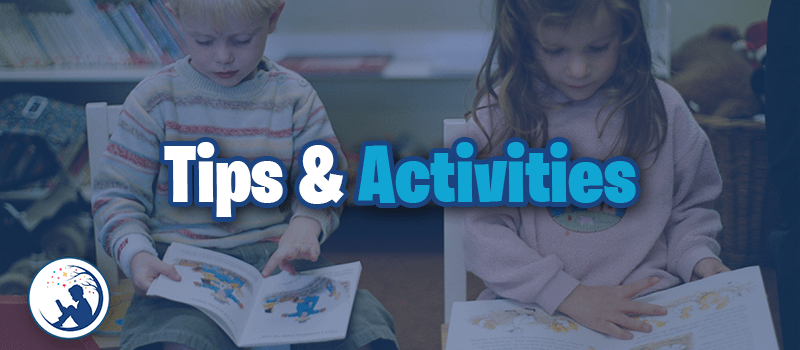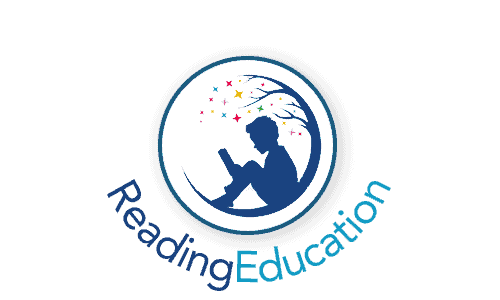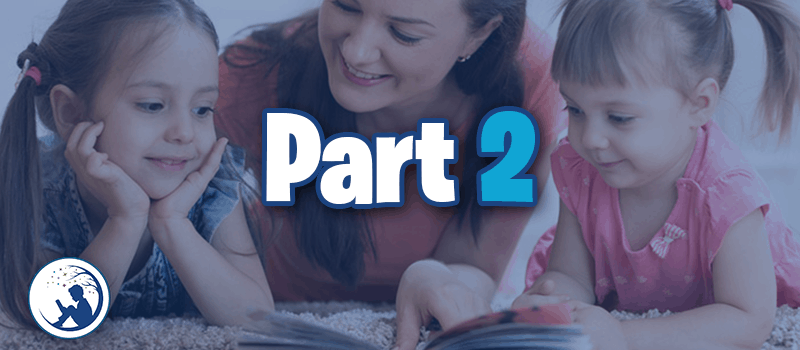Welcome to the second part of our ‘Teaching Your Child to Read Year-by-year’ series! In this set of articles, we’ll be looking at what your child will be learning at nursery or school and what you can do to further their reading skills at home. We’ll focus on eight age groups, which are as follows: Ages 3-4 years; ages 4-5 years, ages 5-6 years; ages 6-7; ages 7-8; ages 8-9; ages 9-10; ages 10-11. There will be one dedicated article for each age group, as well as links to all the other articles in this series to make navigation between articles as straightforward as possible (see the bottom of this page for links to other articles in this series).
Learning to Read: Children Aged 4-5 Years Old
When your child begins school (or pre-school in some cases depending on your child’s age and when they were born), they will start to learn about phonics, which is a method of learning to read words that are written down. This process will begin with your child reading letters by saying the sound(s) they represent, which will then progress to blending sounds together to make whole words.
In addition to learning to decode written down words, your child will also start to partake in activities that will develop early comprehension skills, which will help them to understand what the words say and what the text they are reading or being read means. The combination of all of these skills will build a solid foundation for future confidence and fluency where reading is concerned.
What will they be learning at school/pre-school?
In the earliest year of school or pre-school, your child will be learning more complex early reading skills. These typically include:
Linking sounds and letters together. Your child will learn the 44 phonemes (letter sounds) and begin to understand how they are represented in word form (graphemes). This may also involve an introduction to phonics.
Learning trickier and more complex words. To expand a child’s vocabulary, they must learn trickier words than they are used to (often referred to a ‘tricky words’). These words will often be encountered in the books your child is reading; examples of such words are ‘the’ and ‘said’. Your child will be taught to recognise these by sight.
Blending sounds to create words. Your child will start to understand and learn that separate sounds of letters and how to blend them together to make whole words.
Reading Tips & Activities for 4-5 Year Olds

As mentioned above, there are a wide array of games and activities that can help your child develop early reading skills at home. Here are several examples of such games and activities:
1. Rhyming Games
If you’ve read part one of this guide, you’ll know they we’re big fans of rhyming games – and this doesn’t stop once your child starts school! One of your favourite rhyming games for four to five years old is ‘Into the box goes…’. Get a box of some kind and pretend to place items that rhyme into it – saying these out loud as you do so (for example, a cap, a map, a bap etc.). Do this with your child and then see if they’re able to it independently. To makes this game a little more difficult for them, add in words that don’t rhyme and ask them to stop you putting them in the box! For example, a cap, a map, a dog – the last one shouldn’t be placed in the box!
2. Phonics Word Games
Try placing basic phonics word games based around the sounds your child has learnt or is learning at school. Being by only using the speech sounds, then say the word. For example you could say, ‘At the pet shop I will buy a /c/ /a/ /t/ – cat, a /d/ /o/ /g/ – dog, and a /b/ /a/ /t/ – bat’. Follow this by saying the sounds without saying the full words, instead of asking your child to say the words for you.
3. Pronunciation and Clarity
Although this isn’t a game or activity, it is a crucial piece of advice; ‘pronunciation’ and ‘clarity’ should be your watchwords when playing word-based games and activities with your child. Always say the letter sounds as they should be – don’t extend or add extra sounds on. For example, the ‘N’ is a short /en/ sound, not a prolonged /ennnnn/ sound, nor should it have an extra sounds attached on to it – /en-uh/ for example.
4. Listen To Your Child Read
By this point, your child will probably be sent home with books to read. Always make time to listen to them read on a daily basis, even if it is just for ten minutes. Be both patient and impressed with them, as this will instil confidence in your child. If they appear to be stuck on a particular word, remind them to say each letter sound individually and then blend them together rapidly to form the word. If they’re unable to do this, tell them the word and move on through the book.
5. Read to Your Child
Many children find learning to read hard work; therefore, to stop them from becoming frustrated or simply not enjoying the process of reading, be sure to read to them frequently. Furthermore, reading to your child will also have several benefits as they’ll be able to listen to and hear words and stories that they themselves cannot read. Try to choose books that have stories or information that your child is particularly interested in as this will ensure full engagement.
Thank you for taking the time to read our blog; we really appreciate your time and hope you found this article informative and helpful. If you’re interested in reading the other posts in the ‘Teaching Your Child To Read Year-By-Year’ series, please use the links below:
Part 1 (Ages 3-4)
Part 3 (Ages 5-6)
Part 4 (Ages 6-7)
Part 5 (Ages 7-8)
Part 6 (Ages 8-9)
Part 7 (Ages 9-10)
Part 8 (Ages 10-11)
Thanks again for your time! If you have any comments, questions, or suggestions, please don’t hesitate to get in touch!

